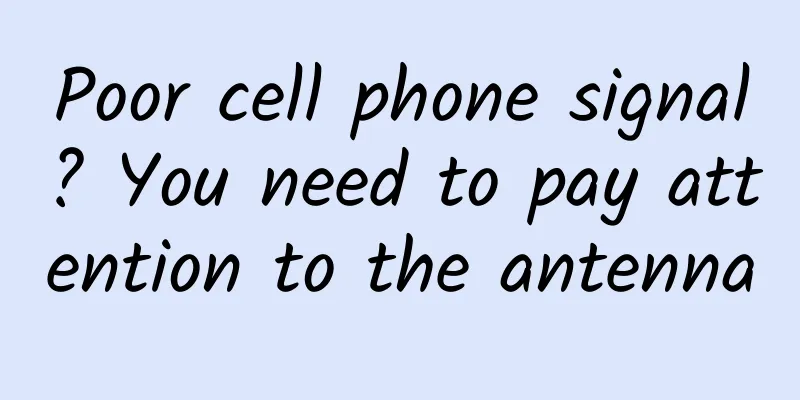Poor cell phone signal? You need to pay attention to the antenna

|
Precise antenna tuning can help smartphones take advantage of new technologies and new spectrum resources. Remember when you pulled out the antenna on your first cell phone to make a call? Antenna design has revolutionized cell phones over the past 25 years. As we transitioned from 2G to 3G and then to LTE, we have incrementally reduced link budgets by 10dB. It’s shocking but true that as networks have improved dramatically, we’ve been able to degrade the performance of phone antennas without much feedback from consumers. A number of factors contribute to this, including the elimination of extended antennas, metal holder phone cases, multi-carrier antennas, carrier aggregation, license-assisted access and multiple-input/multiple-output antenna technology (MIMO), antenna form factor, and time-to-market pressures. Because government agencies test antenna ports to see if they have connectors, and because carriers typically perform testing in a "free space" environment, most users do not notice the degradation in antenna performance. Free space testing is required for CTIA certification under fairly optimized conditions. When testing dynamic performance, the hand grip fixture used is different from the real-life "hand grip". Foam is used to separate the hand from the fixture during testing to avoid using a real hand and having poor simulation performance. Figure 1: The mobile phone has switched from external antenna to internal antenna, which reduces the antenna efficiency The 25-year shift in antenna performance is beginning to take a turn in the other direction, and we find that mobile phone manufacturers are investing in a new technology that is specifically targeted at improving total radiated power and overall sensitivity, which can bring huge benefits to mobile phone users. Antenna diversity In addition to tuning the main antenna, adding a diversity antenna to the device may improve phone performance. Since most smartphones now use LTE's 2x2 MIMO, the LTE bands have been designed with a second antenna added. In fact, the LTE standard allows the use of a second antenna for receiver diversity or for MIMO, choosing the mode that is more favorable for the prevailing channel conditions. Taking this concept a step further, several phones such as the Google Pixel and Samsung Galaxy S7 now use four antennas in key LTE bands, enabling optional four-way receiver diversity and 4x4 MIMO. When testing the phone’s performance in free space, the increase in throughput is not noticeable. In real life, when holding onto the metal casing of a phone for a call, the extra antenna can have a big impact on throughput. Some vendor tests have recorded throughput increases of more than 60%. Mobile operators are starting to invest in 4x4 MIMO for some base stations, but the capability to have 4x4 MIMO is not everywhere. So we envision the architecture of smartphones to have diversity switches that allow 4x4 MIMO operation or four-way receiver diversity, designed to give the phone the best performance in any situation. Tuning function Aperture tuning was introduced 10 years ago and has become a standard part of any smartphone, including multiple frequency bands between 700MHz and 960MHz. In most smartphones today, changing the antenna length acts as a switch, shifting its resonant frequency from one band to another. Some phones use MEMS devices to change the resonant frequency. In addition to the frequency tuning function of mobile phones, more than 100 smartphone models now include impedance matching tuning, which is adapted to reduce the impact of the mobile phone on the mobile phone. Closed-loop impedance matching tuning can restore more than 4dB of radiated power loss performance, which brings benefits to mobile phone users. For example, mobile phone batteries can last an extra hour per day; mobile phones can make more stable data calls because of the uplink limitation of TDD links, so using TRP links, restoring 4dB mobile phone performance greatly improves the stability of LTE links; it brings higher data throughput, and higher signal quality is beneficial to both uplink and downlink. Figure 2: Mismatch losses between mobile phones can be eliminated by closed-loop tuning Carrier Aggregation (CA) Many believe that antenna tuning is incompatible with carrier aggregation, especially when carrier aggregation is implemented for "low-low" band combinations or "high-high" band combinations. However, the closed-loop tuning currently used can be adapted to different situations, and mobile experts predict that impedance matching tuning and aperture tuning can be adopted even in "low-low" CA situations. The next step in the evolution of CA is for the modem to make some choices about whether the tuning settings need to be wideband or narrowband matched. It is worth noting that carrier aggregation can include multiple licensed bands, as well as LAA, 3.5GHz broadband wireless service, and other bands. When there is a constant combination of licensed and unlicensed bands, the CA algorithm can become quite complex. How will it develop next? The industry paradigm has begun to change. A decade ago, handset OEMs were poor at recognizing certain antenna choices made by users, but they were unwilling to spend $2 per phone to fix them. Today, OEM phone manufacturers have proactively chosen to use tuning to solve the problem. The solution has been simplified and "systemized" and the cost is much lower than before. New phones use a combination of diversity and tuning to improve performance by 4dB in daily use, and even 10dB in some cases. Figure 3: System closed-loop design can also be adapted to improve broadband performance If the auction makes the 600MHz spectrum available for mobile communications, we expect the antenna performance problem to become more severe. The same length of antenna, when operating at lower frequencies, becomes electrically smaller because the wavelength is longer. This results in poor antenna efficiency, forcing system engineers to use narrower resonant antennas to reduce electrical losses. Since the 600MHz band will need to be aggregated with 700MHz or 850MHz bands to enter the market, we will need to use more complex "systemized" tuners that can optimize for multiple bands in a dynamic environment. The key is to think of the antenna as a system, not a component. Cell phone OEMs are dealing with dozens of frequency bands, and their products are designed to combine countless frequencies. Finding smarter antenna tuning is a complex problem. Modem vendors that implement advanced closed-loop antenna algorithms will be able to squeeze more performance out of the phone. This isn't a technical detail, but it has a major impact: closed-loop tuning can effectively double the performance of a phone. This translates to longer battery life and higher data speeds for any phone user. Joe Madden is principal analyst at Mobile Experts LLC. Madden provides business analysis for our forecasts, as well as semiconductor sector research. He has worked in the mobile communications field for more than 26 years, during which time he accurately predicted the rise of digital pre-distortion, remote radio heads, small cell networks and the mobile IT market. He has validated ideas with mobile and cable operators and hardware vendors, matching business models with technology. Although he started out studying economics at Stanford, he later holds a degree in physics from UCLA. As a winner of Toutiao's Qingyun Plan and Baijiahao's Bai+ Plan, the 2019 Baidu Digital Author of the Year, the Baijiahao's Most Popular Author in the Technology Field, the 2019 Sogou Technology and Culture Author, and the 2021 Baijiahao Quarterly Influential Creator, he has won many awards, including the 2013 Sohu Best Industry Media Person, the 2015 China New Media Entrepreneurship Competition Beijing Third Place, the 2015 Guangmang Experience Award, the 2015 China New Media Entrepreneurship Competition Finals Third Place, and the 2018 Baidu Dynamic Annual Powerful Celebrity. |
>>: Major breakthrough in non-volatile memory: expected to completely replace existing hard drives
Recommend
From being raised in the palace to being on the verge of extinction today, what has the rhino family experienced?
Produced by: Science Popularization China Author:...
In addition to red envelopes, the Spring Festival Gala also has black technology
What? You’ve finished watching the Spring Festiva...
Write a good product promotion plan, only these 6 tips
I have no idea how to promote a new product every...
A complete collection of online marketing videos for 19.9 yuan: including SEO, SEM, website building, website imitation, and online marketing promotion worth 20,000 yuan!
Learning materials worth 20,000 only cost 19.9 yu...
20 forms of Internet advertising, 5 billing methods, and 10 ROI evaluation indicators
Internet advertising generally follows the follow...
What is the difference between "single sampling" and "mixed sampling" for nucleic acid testing? One picture to understand
Source: Beijing Daily Client...
Why is user activation important? Share 3 points!
The essence of user activation is to quickly deli...
Yuanfudao Product Analysis
Online education has developed rapidly in recent ...
Precise positioning of Moments ads, do you want to know how WeChat sees you?
Do you want to know how WeChat sees you? Since th...
Apple vulnerability does not affect Alibaba APP
SourceDNA, an American application analysis servi...
Brother Wang's "Millionaire Strategy Phase 3" first board wealth model
Brother Wan's "Millionaire Warfare 3rd P...
Produce special effects for Tik Tok, work 3 hours, monthly salary 20,000-30,000
Produce special effects for Tik Tok, work 3 hours...
With a speed of 600 kilometers per hour, how will high-temperature superconducting electric suspension technology change future travel?
If you go from Beijing to Shanghai 1200 kilometer...
Cambridge's cool new invention: Roll up a piece of cloth and it becomes a display screen!
Written by: Wu Tingting Editor: Kou Jianchao One ...









